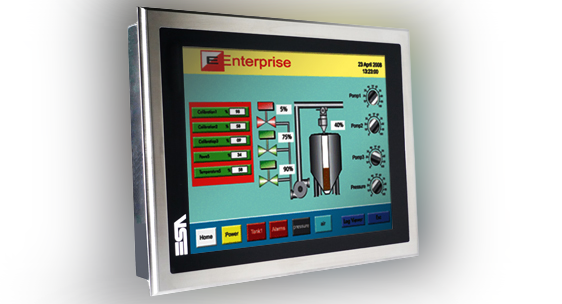Introduction
In today’s fast-paced industrial landscape, the need for efficient and reliable monitoring solutions is paramount. Industrial monitors play a crucial role in ensuring seamless operations across various sectors, from manufacturing and automation to energy and logistics. These specialized displays have evolved significantly over the years, offering an array of features that not only enhance productivity but also contribute to a safer and more efficient work environment. In this article, we will explore the importance of industrial monitors and the ways they are transforming industries.
The Evolution of Industrial Monitors
Industrial monitors have come a long way from their early predecessors. The advent of LCD (Liquid Crystal Display) technology revolutionized the industry, leading to thinner, lighter, and more energy-efficient displays.
They come in a range of sizes, from compact displays suitable for operator panels to large, high-resolution screens for monitoring complex processes. Some key developments in industrial monitors include:
Ruggedization:
Industrial environments can be harsh, with exposure to dust, moisture, extreme temperatures, and physical impact.

Touchscreen Capabilities:
This facilitates quicker response times and reduces the need for additional input devices.
High Brightness and High Resolution:
To meet the demands of modern industries, industrial monitors offer high-resolution displays with excellent color accuracy and high brightness levels, ensuring visibility in bright or outdoor environments. These specialized displays have evolved significantly over the years, offering an array of features that not only enhance productivity but also contribute to a safer and more efficient work environment.
Advanced Connectivity:
Industrial monitors now come with a variety of connectivity options, including HDMI, DisplayPort, USB, and Ethernet, enabling seamless integration with different systems and devices.
Customization:
Some manufacturers offer customizable industrial monitors, allowing businesses to tailor the display to their specific requirements, such as size, shape, and specialized features.
Applications of Industrial Monitors
Industrial monitors find applications across a wide spectrum of industries, including:
Manufacturing:
In manufacturing plants, industrial monitors are used for process monitoring, quality control, and equipment operation. As technology continues to advance, industrial monitors are likely to become even more integrated and intelligent.
Automation:
In the realm of industrial automation, monitors serve as the interface between human operators and automated systems. They provide real-time data visualization, enabling operators to monitor and control machinery and processes. As technology continues to advance, industrial monitors are likely to become even more integrated and intelligent, further enhancing productivity and reducing downtime in industrial processes.
Energy:
Industrial monitors are crucial for monitoring energy production and distribution systems. In power plants, they display critical data related to electricity generation, consumption, and grid stability.
Logistics and Warehousing:
Touchscreen monitors with barcode scanners streamline operations, reducing errors and improving efficiency.

Healthcare:
These monitors must meet strict quality and safety standards to ensure patient well-being.
Conclusion
Industrial monitors have become indispensable tools in modern industrial settings. Their evolution from bulky CRT displays to sleek, rugged, and feature-rich screens has enabled industries to operate more efficiently and safely. As technology continues to advance, industrial monitors are likely to become even more integrated and intelligent, further enhancing productivity and reducing downtime in industrial processes.
FAQs
What are industrial monitors, and how do they differ from regular monitors?
Industrial monitors are specialized displays designed for use in industrial environments. They are ruggedized to withstand harsh conditions, offer various connectivity options, and often have touchscreen capabilities. Unlike regular monitors, industrial monitors are built for durability and reliability in demanding settings.
What industries benefit from industrial monitors?
Industrial monitors find applications in a wide range of industries, including manufacturing, automation, energy, logistics, healthcare, and more. Any sector that requires reliable and robust displays for process monitoring and control can benefit from industrial monitors. Unlike regular monitors, industrial monitors are built for durability and reliability in demanding settings.
What is the importance of ruggedization in industrial monitors?
Ruggedization is essential in industrial monitors because they are exposed to dust, moisture, extreme temperatures, and physical stress in industrial settings. Ruggedized monitors are built to withstand these conditions, ensuring uninterrupted operation and longevity.
Are all industrial monitors touchscreen-enabled?
No, not all industrial monitors have touchscreen capabilities, but many do. Touchscreen functionality is a valuable feature as it allows for intuitive interaction and data input. Some manufacturers offer customizable industrial monitors, allowing businesses to tailor the display to their specific requirements, such as size, shape, and specialized features. The choice of touchscreen or non-touchscreen depends on the specific requirements of the industrial application.
What is the significance of high brightness and high resolution in industrial monitors?
High brightness ensures that the display remains visible even in well-lit or outdoor environments. High resolution enhances the clarity and detail of displayed information, which is critical for accurate monitoring and decision-making in industrial processes.
Related Article:
A Comprehensive Guide How To Connect Chromebook To Tv
